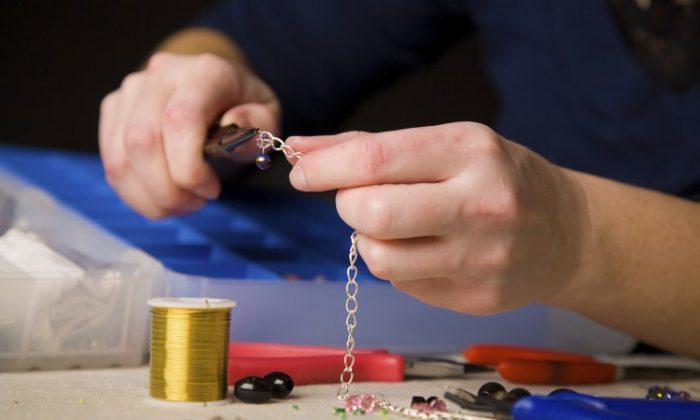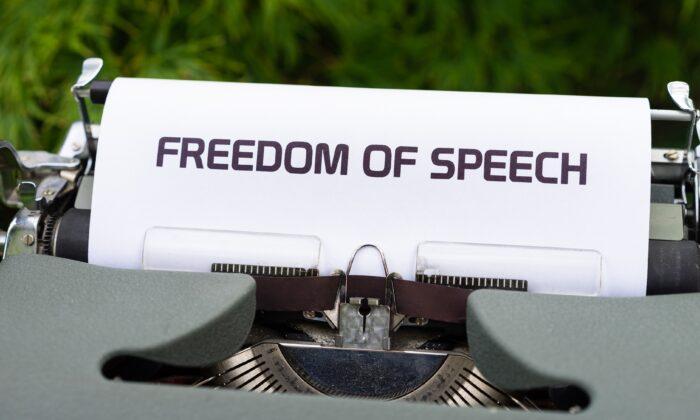I’ve always loved jewellery – I don’t know why, maybe I was an Egyptian princess in a former life. Not often being able to afford “real jewellery”, the costume and fashion jewellery explosions sucked me right in and gave my children a trusty gift idea for my every birthday and Christmas. So I accumulated endless amounts. However, a lot of low quality jewellery is on the market from the ethically dubious production lines of China and India, and all this began to leave a decidedly unpleasant taste in my mouth.
Style and quality
Having finally overdosed on tat and guilt, I gradually developed a taste for the style and quality of retro and vintage jewellery, so now and then collected a few treasured pieces. I grew to notice the charm of Vaseline glass beads (so called because they have the milky opaque appearance of that popular all-purpose salve) and retro pale pastel and opalescent colours as well as French jet and marcasite. I began to appreciate these hand-produced or small factory items along with all the cuts and marks and not-quite-equal facets that made them individual.
Unlike the cold anonymity of their mass-produced equivalents, they seemed to bear the mark of the human hand and the romanticism and mystery of a history that was palpable when I handled them. I would wonder who in the 1930s, ‘40s, ’50s and ‘60s might have worn them before me.
Glamour and elegance
I'd always admired the glamour, poise, and elegance of Hollywood stars like Greta Garbo and Audrey Hepburn, and even once bought a pewter necklace worn in one of that era’s movies. It had a certificate of authenticity and was made up in a dramatic swathe of ornate pewter roses set with garnets a la Gone with the Wind. I had it repaired once or twice over the years and fully intend to revive it again to keep up with the current and growing vintage revival.
One 1940s’ pearl necklace reminded me of a story my mother, now 93, told me about when she was young and apprenticed to a prestigious milliner in Royal Leamington Spa. She said the well-off ladies would come in to order their bespoke headwear in impeccable tailored skirt suits and all-leather made-to-measure shoes with tortoiseshell buckles. They'd be donning (strange to us now) fox furs and of course beautiful, timeless pearls. Imagine my fascination when she also said that they would often have a live, exotically coloured parrot perched on one shoulder beside their blue (yes blue), shoulder-length, demi-waved hair.
What a romantic story my mother had told me from the days before the global high street, when tailors made clothes to fit, couture was king, and the cut of a lady’s jib might still be measured by the cut of her clothes.
After hearing my mother’s tale, of course I quickly added (good quality fake) pearls, the ultimate in chic, to my humble collection. I found these older, better-made, less mass-produced trinkets had much more to offer, and my friends, complimenting me on a favourite marcasite brooch against a plain cardigan or a Bakelite dress clip on a tailored frock, made me see that people definitely still appreciate style.
My collection grew, but the problem is that buying 1930s–50s’ jewellery carries the risk that, after wearing the originally extremely well-constructed necklaces once too often, they can finally give out. The meticulous quality stringing, having aged, can fail at the wrong moment, say at a dinner party just as the main course is being served. As you see the beads cascade across the table onto the floor and under the unmoveable couch, you just know you might not ever get them all back and are, in any case, far too embarrassed to get on all fours to retrieve every last one.
Next page ... The missing bead might be the centre front one
The missing bead might be the centre front one, which would often be larger than the others, the necklace having been designed with the beads diminishing in size by gradation towards the fastener at the back of the neck. For me this is tough because I’m old fashioned and like things to match and be in harmony. My daughter even said once, “Mum no one in the street will see your lingerie so why can’t you go out unless it matches your dress?” Not being able to see how a piece could be reconstructed without all its parts, necklace after broken necklace made from dreamy retro greens, aquamarines, eggshell blues, and opaque corals were thus consigned to the “for repair” box.
Preserve and upcycle
Fortunately, things changed when I took a half-day jewellery-making class and was introduced to marvellous memory wire and a way to resurrect, preserve, and wear some favourite vintage pieces again quickly and without spending a fortune. Memory wire is produced in coils and keeps or “remembers” its shape so you can’t string it too tightly and it does not need complex fixings or the services of a professional jeweller.
This is how I transformed and upcycled a broken necklace of 1940s’ blue Vaseline glass (with the main front stone missing) into a lovely, clavicle hugging necklace with matching earrings in less than half an hour:
Equipment
Round nosed pliers
Flat nosed pliers
Mini wire cutters
Moulded numbered bead board
Square of dark velvet cloth to work on
Materials for necklace
Memory wire (comes in a coil – select enough to go around your neck once so that it sits neatly on your collar bones but with a two-inch gap at the back and snip with mini wire cutters)
32 blue opaque multifaceted Vaseline glass beads (original vintage)
32 clear paste small spacer beads (original)
2 silver jump rings
1 sterling silver lobster clasp
2–3 inches sterling silver chain (medium-sized links)
Materials for earrings
Two sterling silver head pins
4 blue opaque multifaceted Vaseline glass beads – 2 per earring (original)
6 clear paste small spacer beads – 3 per earring (original)
2 crystal medium beads – 1 per earring (original)
2 sterling silver fish hook earring hooks
How to make the necklace:
• Place blue beads on numbered bead tray and inter-space each one with clear paste spacer beads.
• Take memory wire coil and using round nosed pliers make a loop at one end about the size of a small jump ring. Ensure that the loop is turned outwards so that the cut edge of the wire faces away from the neck. Flatten the closure using the flat nosed pliers.
• Thread each blue bead and spacer bead in turn onto the other end of the wire over a piece of dark velvet cloth. The cloth helps you to see the beads and to protect their surfaces.
• Turn a loop on the remaining end of the memory wire.
• Attach a jump ring to the loops at each end of your necklace.
• Using round nosed pliers, open the jump ring at one end and attach a lobster clasp fastener. Open the jump ring at the other end and attach a small length of silver chain.
• Finish off the open end of the silver chain with a small charm as desired, and your necklace is complete.
How to make the earrings:
• Thread a spacer bead onto a silver head pin (which has a flat end so the beads will not slip off), followed by a blue bead, a spacer bead, another blue bead, another spacer bead and then a crystal bead.
• Using round nosed pliers, form a loop at the top, flatten the loop closed with the flat nosed pliers, and attach a fish hook earring fitting.
• Repeat for second earring.
Memory wire comes in bracelet and ring size also, so you can use the same basic method with the smaller coil sizes to complete your look. By using multiple bracelet-sized coils, say three or more, you don’t even need to use a fastener and fiddle with it to get it closed when you come to wear it. Every woman knows this is often difficult to do one-handed, especially when in a hurry. This wearer-friendly feature is so reliable because the marvellous memory wire springs firmly into place and stays put, coiling around and hugging your wrist, ankle or finger.
The great thing is, is your precious vintage beads are now safe as your bracelet simply won’t come off unless you uncoil it on purpose.
All basic equipment is easily available at good bead shops or from online retailers and via Amazon.com.
The Epoch Times publishes in 35 countries and in 19 languages. Subscribe to our e-newsletter.











